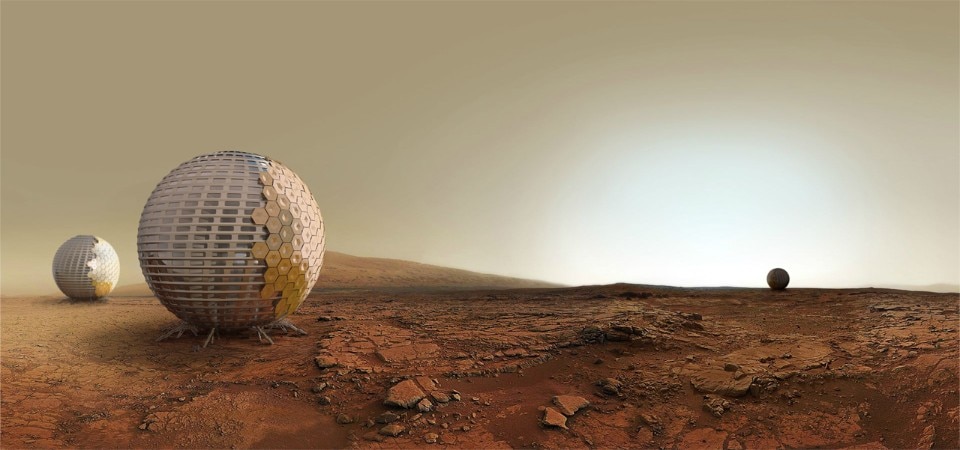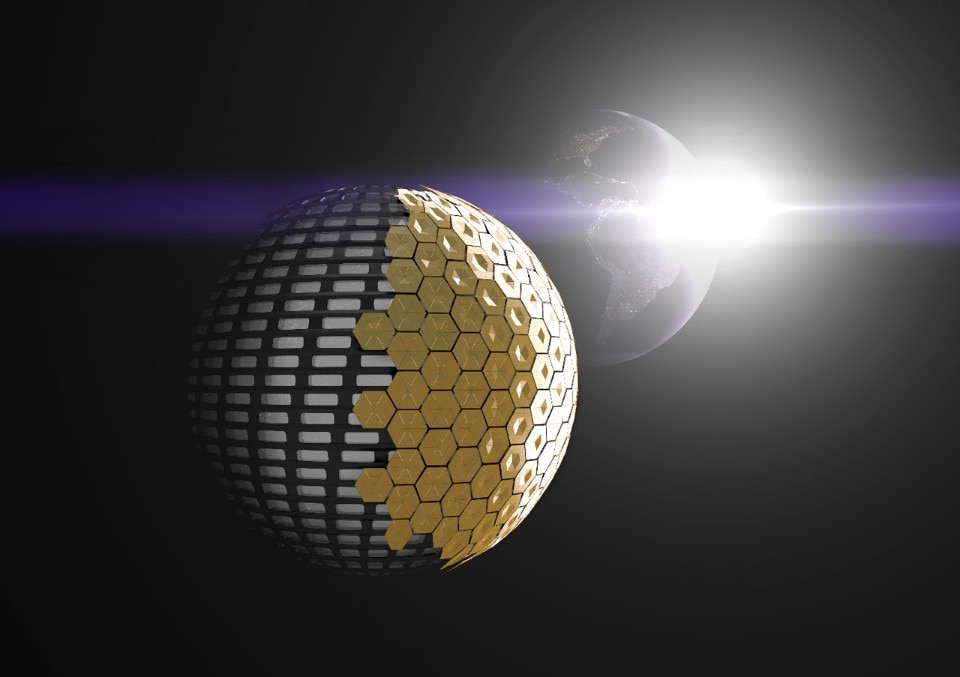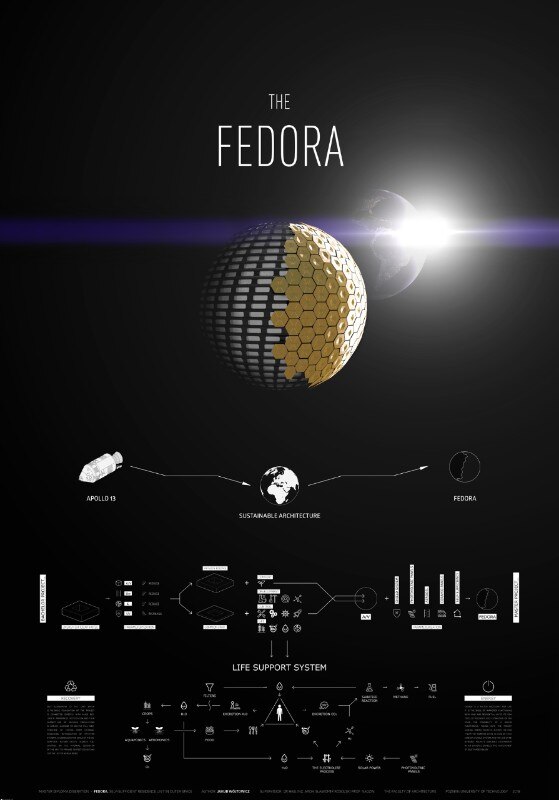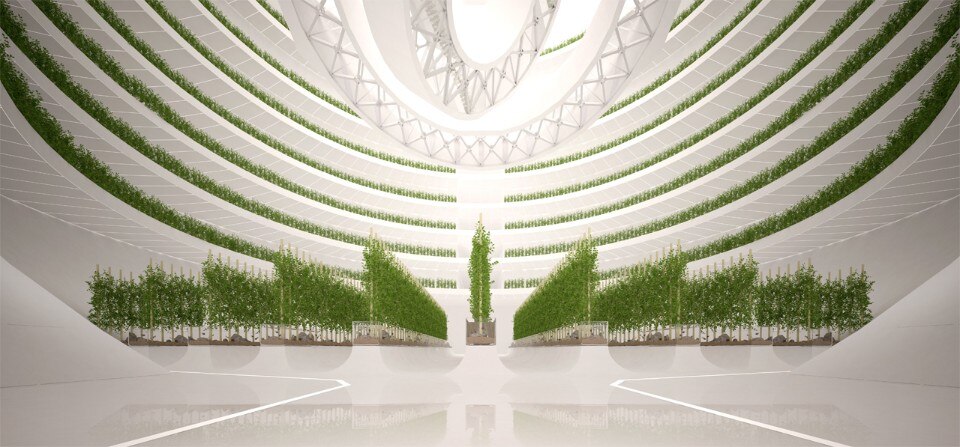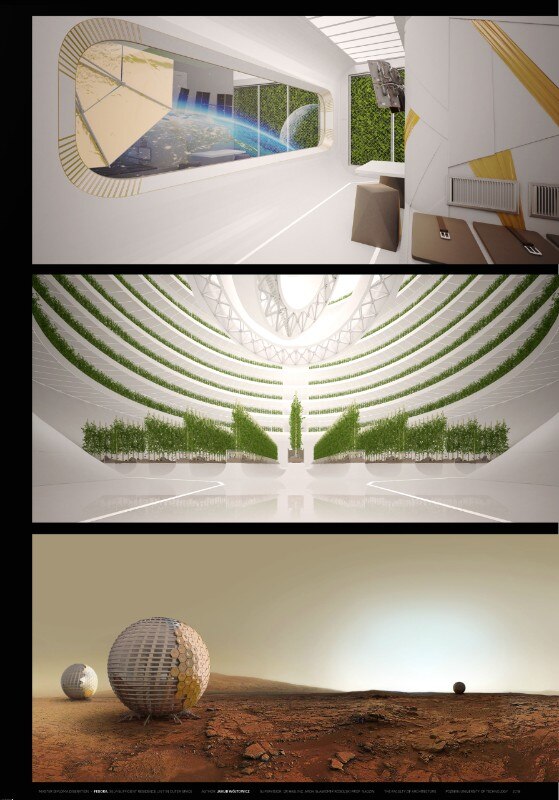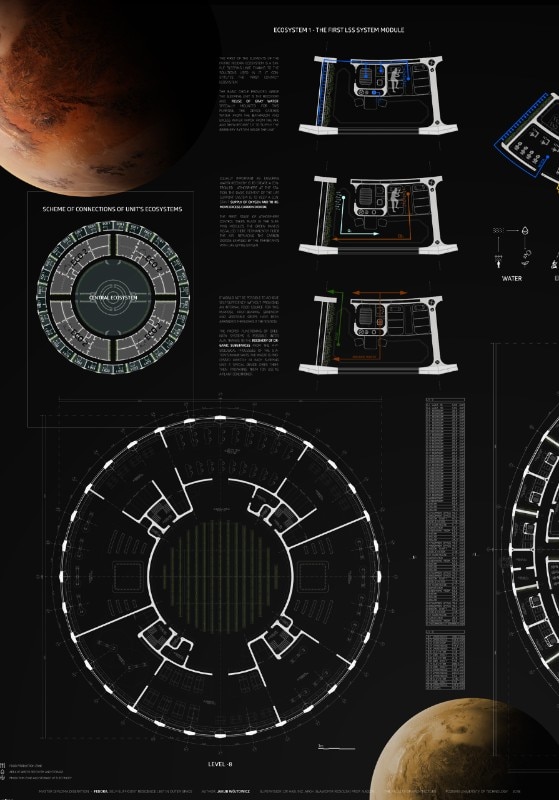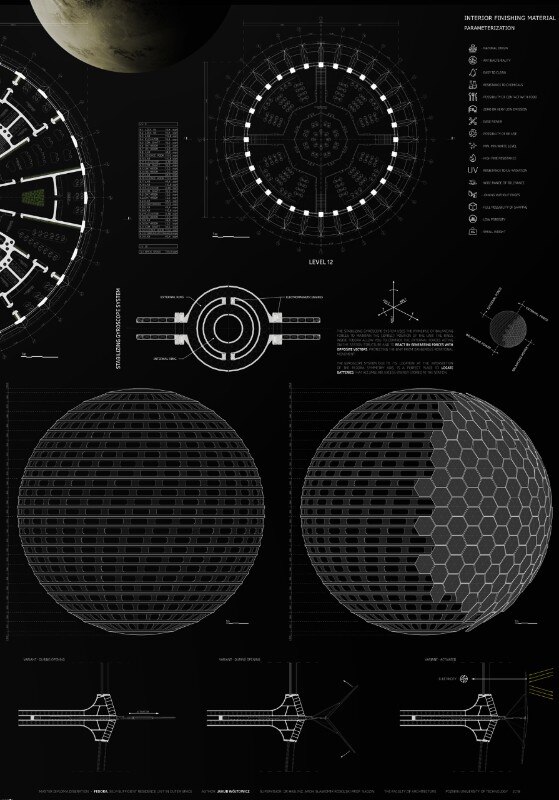In 2017, Stephen Hawking declared that humankind had treated the plannet so poorly that we had just 100 years to leave Earth.
Picking up the batton, Pozan University of Technology graduate Jakub Wojtowicz has developed this concept that would allow humans to live a self-sufficient life in outer space – or another plannet.
The project titled “Fedora. Self-sufficient residence unit in outer space” is a spherical residential unit designed to adapet to any part of the Universe. It’s self-sufficient system combines physiological factors with energy-efficiency and maximum comfort.
The name of the project – also Wojtowicz’s dissertation title – comes from Italo Calvino’s fourth “invisible city”, Fedora.
“In the center of Fedora, that gray stone metropolis, stands a metal building with a crystal globe in every room,” wrote the Italian author.
“In every age someone, looking at Fedora as it was, imagined a way of making it the ideal city, but while he constructed his miniature model, Fedora was already no longer the same as before, and what had been until yesterday a possible future became only a toy in a glass globe”.
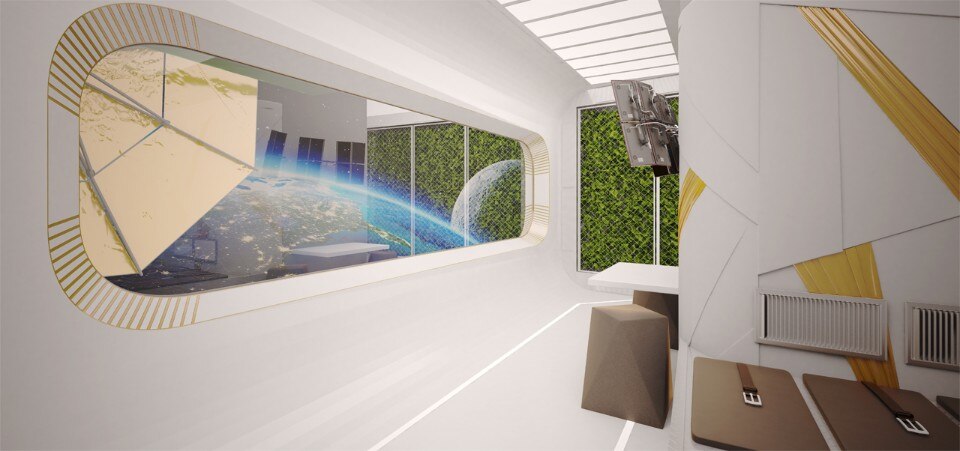
Developed from his earlier thesis on an energy saving hotel, the concept for Fedora originates from the desire to take the idea of self sufficency to the next level.
The resulting housing concept takes into consideration issues such as athe production and storage of water, food and electricity. Currently each litre of water consumed by an astronaut in space costs $10,000, but in Wojtowicz’s scheme he imagines the cost so reduced that space missions become more economically viable.
Solar panels are replaced with radioisotope thermoelectric generators as an energy source – selected for their prolonged efficiency. Food is cultivated through aquaponic and aeroponic techniques.
Its primary characteristic is its spherical shape. The lack of external carvings and elements that can reduce its compactness, a combination of prefabricated and framing systems, titanium, aluminium and lithium alloys, ceramic tiles coatings, a thermal insulation from aerogels and MLI systems.
The single, double and family 400 units are divided into these areas: a lounge area, both technical and control areas and a residential area ensuring privacy and comfort to the crew. Finally a large part is dedicated to self-sufficiency with the zones of oxygen, food and electricity production, the cistern and the warehouse of resources and goods.
- Thesis:
- Fedora. Self-sufficient residence unit in outer space
- Author:
- Jakub Wojtowicz
- Supervisor:
- Slawomir Rosolski
- University:
- Poznan University of Technology
- Completion:
- 2018


